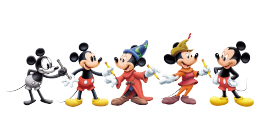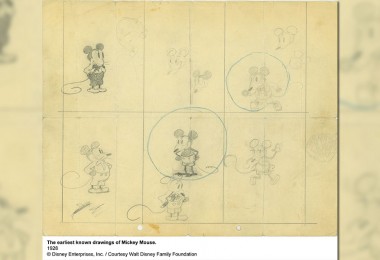
Reid, Gainesville, Florida
A: The artwork is in the Animation Research Library, not the Archives. The earliest drawings there are 1928 drawings from Plane Crazy, the first Mickey Mouse cartoon animated, though not the first released—that honor went to Steamboat Willie.

Michael, New York, New York
A: No, Alice in Wonderland played instead at the Criterion theater on Broadway in 1951.
Brian Davis, Washington, DC
A: Harry Bailey started at the Disney Studio in 1933 as an animator, working on such films as The Flying Mouse and Servants’ Entrance; he later became a storyman. Bailey left in 1936, but returned from 1938–39, as manager of story training. I do not know why he would have signed the book pocket in the Bambi book from the Studio Library.

Marty, Diamondhead, Mississippi
A: Many Disney films, including early live-action classics and several True-Life Adventures, are available through the digital app and website
Disney Movies Anywhere.

Mickey, Ohio
A: The first Mickey Mouse cartoon released to the public was Steamboat Willie on November 18, 1928 (the date we use as the introduction of Mickey Mouse), though audiences in one Los Angeles theater could have seen a preview of Plane Crazy as early as one day in May of that year.
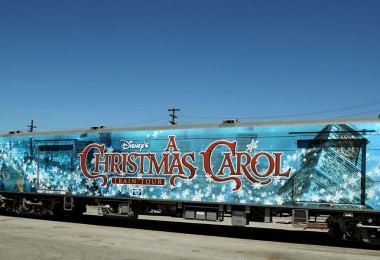
Larry, Sonoma, California
A: The Amtrak train, known as Amtrak GE P42 #156, pulled by two locomotives, was fitted out with exterior decorations and displays inside the cars, to help promote the film in 2009. Amtrak and Hewlett-Packard helped sponsor the train. At the completion of the tour, the Christmas Carol elements were removed from the train, and it was returned to regular service. In 2011, in conjunction with the 40th anniversary of Amtrak, the same train’s locomotives were repainted in an anniversary scheme.
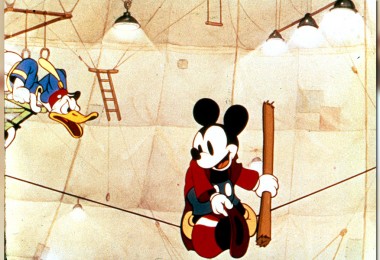
Barbara, Oroville, California
A: This is a shortened version of a Disney cartoon, possibly Orphan’s Benefit (1934), in which Donald is forcibly removed from a stage by a hook. These shortened films were retitled and released by Hollywood Film Enterprises for use on home projectors; they are not rare. As I write this, a print of Getting the Hook is being offered on eBay with a starting bid of $7.50.
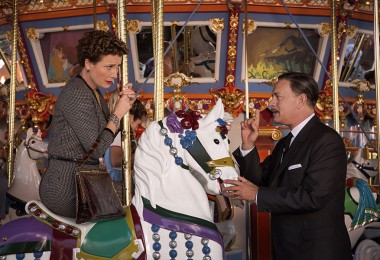
Emily, Selden, New York
A: No, he did not take her to the park; her escort was Bill Dover, head of the Disney Studio’s Story Department.
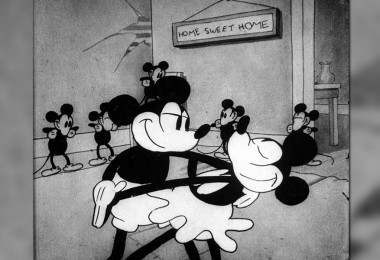
Marie, Serris, France
A: The white gloves were added to Mickey’s hands in When the Cat’s Away (1929), the film made after The Opry House. John Grant, in his Encyclopedia of Walt Disney’s Animated Characters, quotes Walt Disney as saying, “We didn’t want him to have mouse hands, because he was supposed to be more human. So we gave him gloves.” The white gloves against a black body indeed provided a necessary contrast to the black hands that were utilized in the first few cartoons, so the gloves continued to be used thereafter.
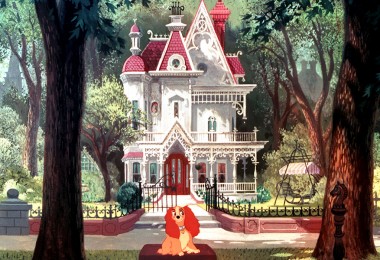
Lynnean, Palatine, Illinois
A: Ward Greene, the author of the story which was published just before the film came out, only says “there lived in a white and green house on a pleasant street a cocker spaniel named Lady.” The filmmakers probably just decided to make the American town very generic from an era “not so long ago but a time when most people still used gaslight and preferred horses and carriages to gasbuggies.”



